Visitors, 22-hour old Moon
Posted: 21 April 2023
Wednesday, 19 April 2023, was cloudy and windy. Thursday, 20 April, was clear but breezy. I opened the observatory early as some visitors were coming.
|
Open: Thursday, 20 April 2023, 1715 MST Temperature: 69°F |
Session: 1855 Conditions: Mostly clear, breezy |
Equipment:
12" f/8 LX600 w/StarLock
2" 24mm UWA eyepiece
2" 14mm 100° eyepiece
Camera:
iPhone 13 Pro Max
D850 DSLR
I set up the D850 DSLR with 150-600mm telephoto lens on the house front patio. I would be attempting to photograph the thin crescent Moon when it was 22 hours old shortly after sunset.
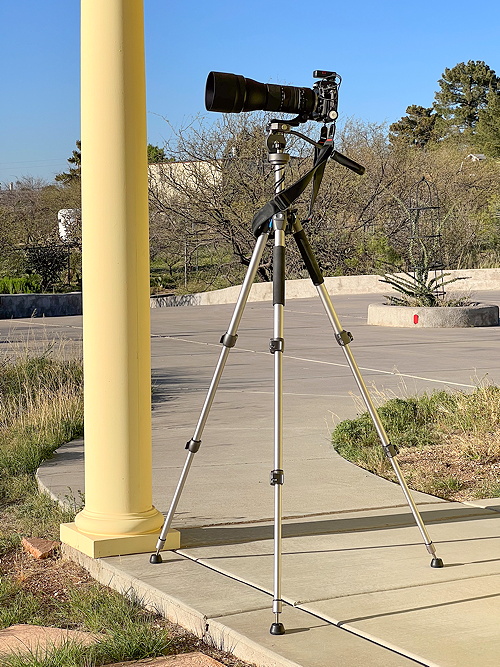
Pete, Carol, and Mark arrived for a night of viewing through the 12" telescope. They would also have the opportunity to view the very young Moon, clouds permitting.
1859 MST: Sunset.
Clouds along the western horizon would present a challenge to being able to view the Moon, as seen in this iPhone 13 Pro Max photo taken at 1859 MST.
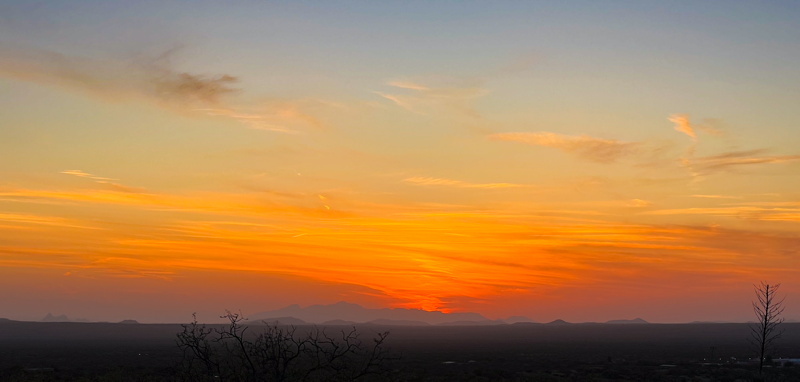
1916 MST: I saw the 22-hour Moon using 12x50 binculars. Shortly afterwards everyone else was able to see the Moon. It eventually became faintly visible to the naked eye, although clouds and a jet contrail made it difficult. The clouds and the contrail also helped to point out the location of the Moon in the sky.
1917 MST: The crescent Moon taken with the D850 DSLR (f/6.3, 1/160sec, ISO 1600, White Balance Auto, FL 600mm).
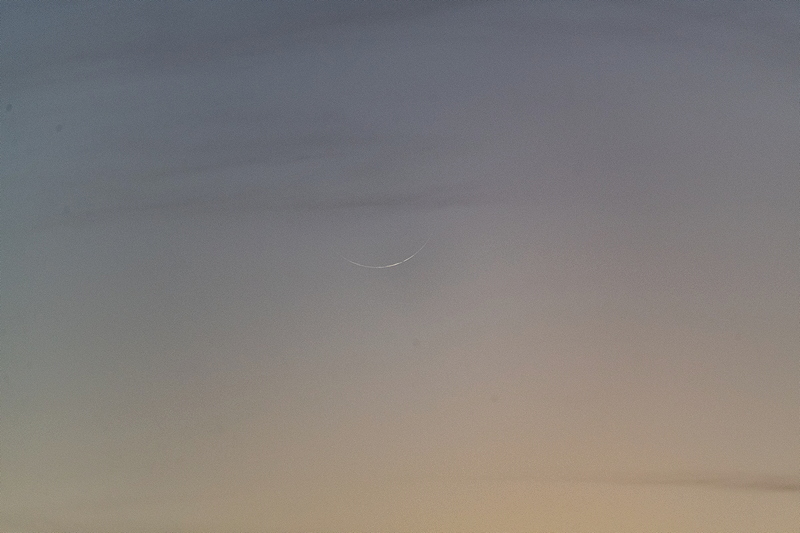
1918 MST: The crescent Moon with the D850 DSLR (f/5, 1/200sec, ISO 1600, White Balance Auto, FL 150mm).
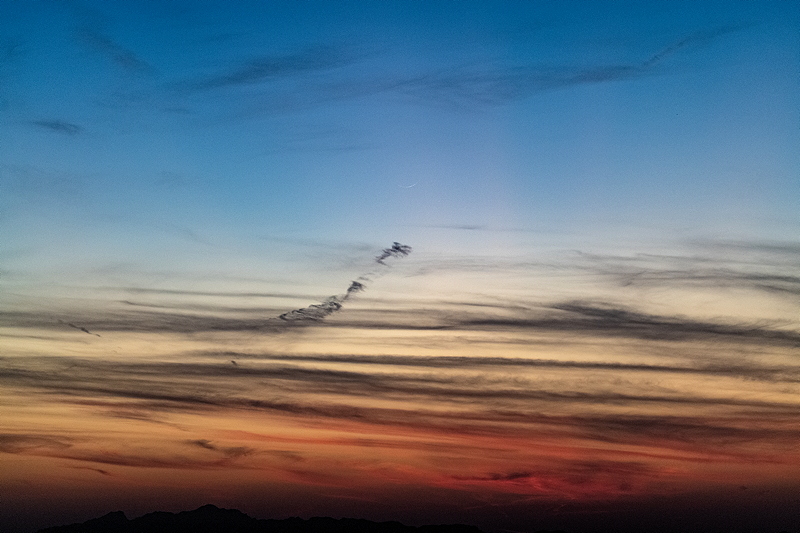
Mouseover or tap on image for a pointer to the Moon
1922 MST: The crescent Moon taken with the D850 DSLR (f/6.3, 1/30sec, ISO 400, White Balance Auto, FL 600mm).
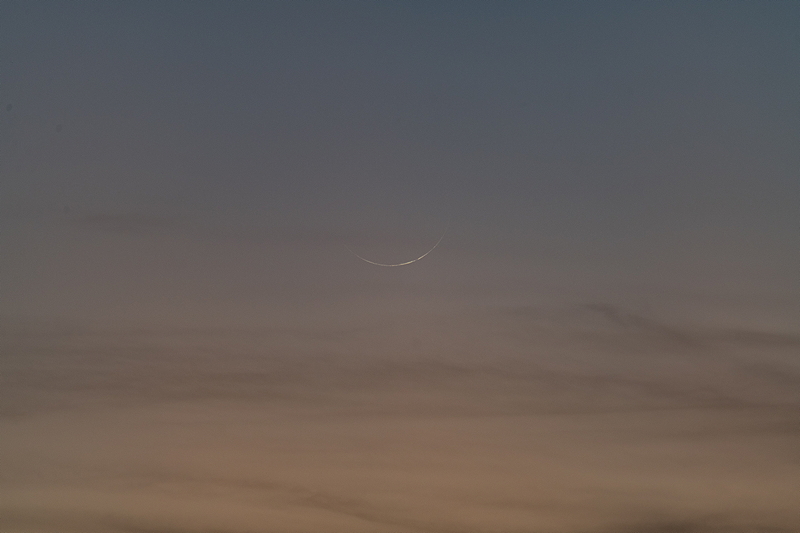
1922 MST: The crescent Moon with the D850 DSLR (f/5, 1/30sec, ISO 400, White Balance Auto, FL 150mm).
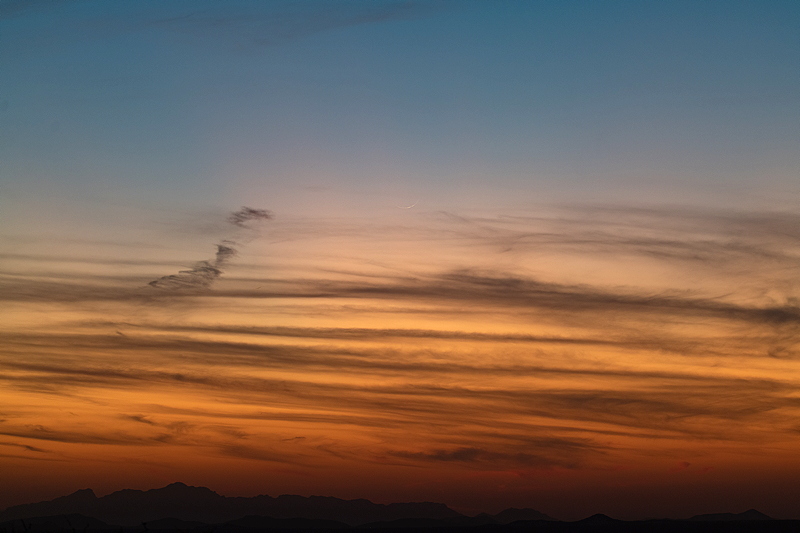
Mouseover or tap on image for a pointer to the Moon
It was exciting to see this young Moon even though it was not close to being my personal record of a Moon that was 13 hours and 48 minutes old seen and photographed on 1 January 2014.
We then went to the observatory. I gave Pete, Carol, and Mark a history of the observatory and then opened the dome.
1938 MST: LX600 ON, StarLock OFF, High Precision OFF.
We viewed Venus, 102X. Next was M42 (the Great Nebula in Orion), 102X. I pointed out that the Zodiacal Light was faintly visible in the twilight sky. We then viewed M82 (Cigar Galaxy) and M81 (Bode's Galaxy), 102X. We then viewed NGC2392 (Eskimo Nebula), 174X. As Carol and Mark had once lived in Alaska, this was a treat for them to see.
2059 MST: Dome OFF.
We viewed the Leo Triplet of Galaxies, 102X. All three galaxies (M65, M66, and NGC3628 Sarah's Galaxy) were in the same field-of-view of the 2" 24mm UWA eyepiece. Next we viewed M104 (Sombrero Galaxy), 174X.
2205 MST: Dome ON.
The last object we viewed was M51 (Whirlpool Galaxy), 102X.
2211 MST: The visitors left the observatory. Although thin clouds hampered the views at times and made the sky a little brighter than it would normally be, they had a great time visiting Cassiopeia Observatory.
2213 MST: LX600 OFF.
Due to the thin clouds I did not take a Sky Quality reading this night.
|
Close: Thursday, 20 April 2023, 2220 MST Temperature: 55°F |
Session Length: 5h 05m Conditions: Mostly clear with thin clouds in places |
Oracle State Park events on Saturday, 22 April, for Earth Day and International Dark Sky Week:
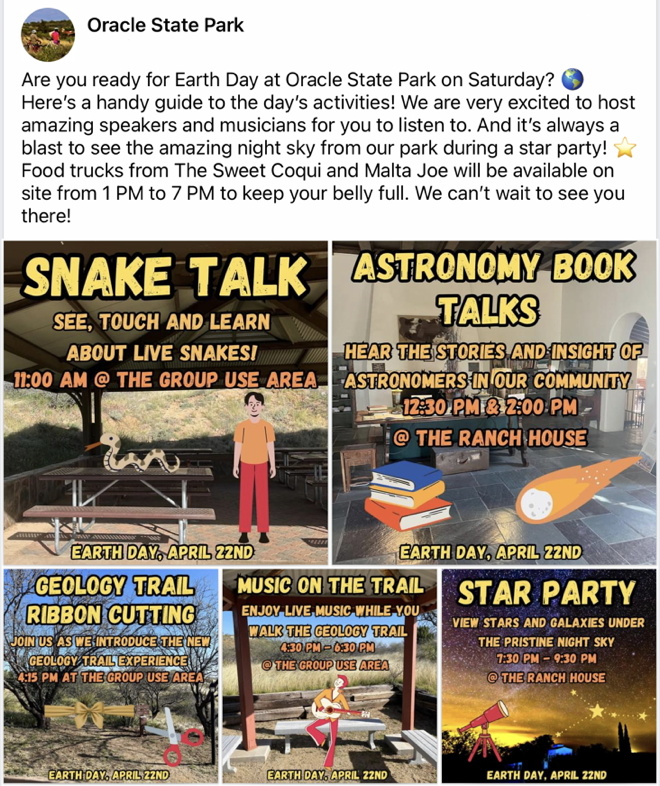
Comments are welcome using Email. Twitter users can use the button below to tweet this report to their followers. Thanks.
Cassiopeia Observatory Home Page
Copyright ©2023 Michael L. Weasner / mweasner@mac.com. Email Etiquette.
URL = http://www.weasner.com/co/Reports/2023/04/21/index.html
